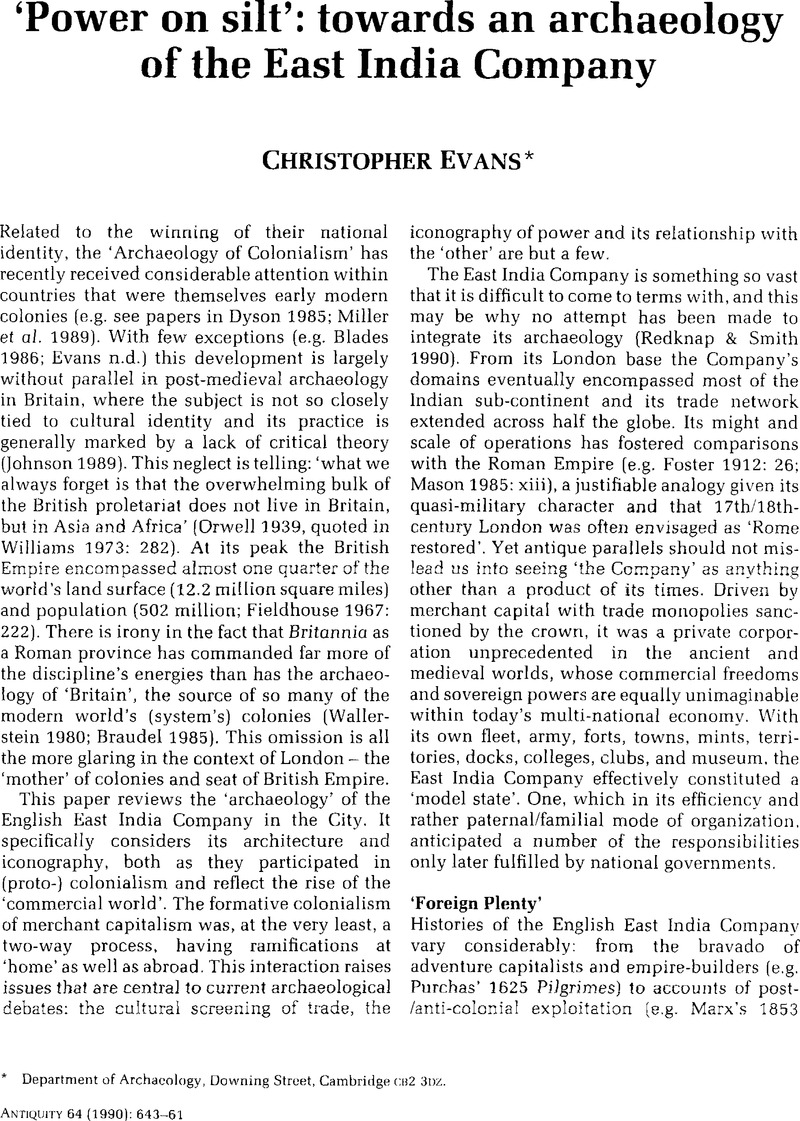Crossref Citations
This article has been cited by the following publications. This list is generated based on data provided by Crossref.
Evans, Christopher
1997.
Sentimental Prehistories: The Construction of the Fenland Past.
Journal of European Archaeology,
Vol. 5,
Issue. 2,
p.
105.
Evans, Christopher
and
Pollard, Joshua
1999.
The Institutional Façade: Architectural Recording at the Old Schools, University of Cambridge.
The Antiquaries Journal,
Vol. 79,
Issue. ,
p.
213.
Nordin, Jonas M.
2016.
The world in a nutshell: a historical archaeology of early modern entanglement in Scandinavia and India studied through the life course of the Danish nobleman Ove Gjedde, 1594–1660.
Post-Medieval Archaeology,
Vol. 50,
Issue. 2,
p.
244.
Mason, Paul M.
2016.
Two 17th-century English factories in North Kanara, Karnataka, India: a historical archaeology perspective.
Post-Medieval Archaeology,
Vol. 50,
Issue. 2,
p.
227.



